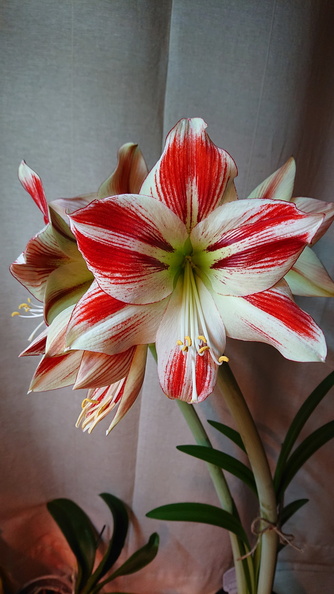I grow them but I'm not an expert. I was sure something must be available on the Web by an expert. I normally send people interested in bulbs to the
Pacific Bulb Society. In this case their extensive Web page covers growing many Hippeastrum species, but doesn't have an article on the hybrids. From the home page look at the page Photographs, and you will find hundreds of genera of geophytes with many thousands of photos.
Fortunately I found an excellent Hippeastrum article written by somebody I know. Susan Mahr, PhD, is now retired from the University of Wisconsin.
Here is her article. It is targeted at people living in cold-winter climates who cannot grow them outside year-round.
The chief obstacle is that they won't grow luxuriantly nor flower again until they develop a sturdy roots system. Sound familiar? A lot of forced bulbs have most of their roots trimmed to fit into the package. Members of Amaryllidaceae have very large, white, succulent roots that persist even through months-long dormant dry seasons. When they are removed to fit into a small box the plants are set back. The next set of flowers has already been formed, so it doesn't affect forcing. This is the reason for the advice to water gingerly after flowering is finished. Once they grow roots they like lots of water.
If planted in the ground or in very large pots, most Hippeastrum hybrids offset regularly and soon produce a very impressive show. But not many people want to drag a huge pot in and out of the house with the seasons.
Once in regular growth the hybrids can be brought into flower at any time of the year by letting them go dry, removing the plant with the soil mass from the pot, laying the plant and soil mass on its side in very bright shade, and leaving it for 6 weeks. Then put it back into the pot and resume watering. It will flower 6 weeks later. So, if you desire them flowering for a special occasion, begin 12 weeks before the event. This information is from the online discussion of the now-defunct International Bulb Society. It was posted by a member from Florida, where one can dig up Hippeastrum clumps and leave them in the shade outside at any time of the year.




































 Linear Mode
Linear Mode


